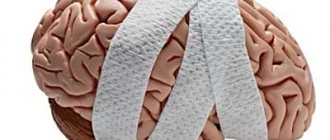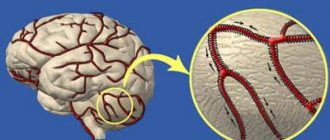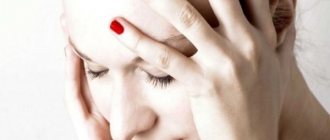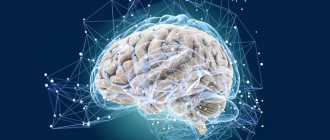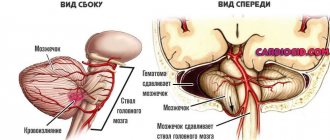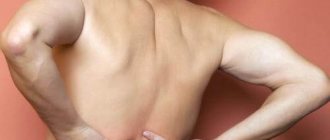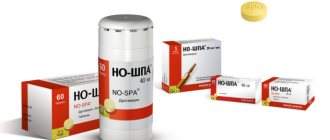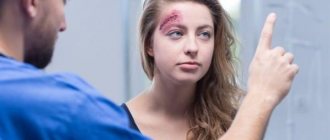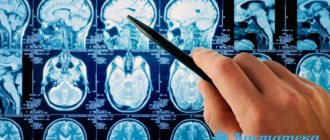All patients with a concussion must be admitted to the hospital for 2 days for examination to rule out a more serious problem. If, after the examination, it turns out that the patient has a mild degree of traumatic brain injury, he is discharged for outpatient treatment and recommended what to drink at the first
Help for patients with concussions comes down mainly to symptomatic treatment. If you complain of a headache, analgesics are prescribed; to stabilize the autonomic system, antiemetics and beta blockers are prescribed. Taking diuretics is not necessary for a concussion, since at this stage of the injury there is no risk of developing cerebral edema. Only in some cases, patients are prescribed diuretics and limit fluid intake. Patients may be prescribed the following medications:
- sedatives;
- desensitizing drugs;
- vegetotropic agents;
- nootropic drugs.
Sedatives
If anxiety or depression appears after an injury, patients are prescribed sedatives or tranquilizers. As mild sedatives, use tincture of motherwort or valerian, Valocardin, Corvaldin, Corvalol, Novopassit, Persen, Fitosed.
If the patient's depression is not relieved by sedatives, stronger anti-concussion pills are used. Doctors can prescribe tranquilizers: Relanium, Nozepam, Phenazepam. Tranquilizers relieve anxiety, fear, and improve sleep quality. However, you should be aware that long-term use of such medications leads to addiction.
"Cerebrolysin"
The main active ingredient of this drug is Cerebrolysin concentrate (produced from pig brain). The composition contains water for injection and sodium hydroxide as additional substances. Available in the form of ampoules, the package contains from 5 to 10 pieces.
Cerebrolysin has a neuroprotective and multifocal effect on brain cells. The peptide fraction improves the functioning of nerve cells and activates recovery mechanisms in patients after injury. The drug is administered intravenously or intramuscularly in a hospital setting. Dosage - from 5 to 50 ml once a day. The recommended course of therapy is from 1.5 to 3 weeks.
Contraindications to the use of Cerebrolysin:
- kidney diseases;
- individual intolerance to the components of the drug;
- epileptic seizures.
Typically, the medicine does not cause serious side effects. They can appear only after an overdose or against the background of hypersensitivity of a particular patient. These include loss of appetite, metabolic disturbances, fever, chills and tachycardia. Concomitant use with MAO inhibitors and antidepressants is not recommended.
This medicine can be used for concussions in children from 6 months, but only after a diagnostic examination.
Therapy for severe autonomic reactions
The main drugs in the treatment of concussions include desensitizing drugs (Tavegil, Pipolfen). What to take for adults and in what doses is decided by the doctor. Desensitizing therapy is used to treat severe autonomic disorders:
- dizziness;
- cardiopalmus;
- nausea;
- dyspnea;
- changes in blood pressure;
- chills;
- hot flashes.
To relieve nausea and vomiting, patients are prescribed Cerucal and Metoclopramide. For dizziness, vegetotropic drugs are prescribed - Belloid, Bellaspon. The drugs have a combined effect - antispasmodic and sedative. Taking medications improves the patient's condition, reduces sweating and salivation, normalizes heart rate, and improves sleep. Since the preparations contain belladonna extract, consultation with a doctor is necessary before using them. In case of severe autonomic disorders, antispasmodics may be prescribed - No-shpa, Eufillin.
Vitamins and minerals
During rehabilitation therapy, the body needs vitamins and minerals. In this case, it is recommended to give concussion victims folic acid, phosphorus, magnesium and vitamin B. This must be done strictly according to the schedule prescribed by the doctor. Pyridoxine, or vitamin B in other words, is actively involved in the metabolism of amino acids, enzymes, and the synthesis of neurotransmitters. In the presence of vitamin B, magnesium is better absorbed in the intestines, its transfer into cells is activated, and the accumulation of this substance in cellular depots improves. Magnesium, in turn, promotes the activation of pyridoxine in the liver. The combination of these components has a positive effect on brain cells, protecting them from destruction. Vitamin B can be used either in combination with other vitamins or as part of the drug Magvit B6. Usually drugs are prescribed for a long term, including for treatment at home.
Painkillers and diuretics
Patients are prescribed painkillers for concussions (Analgin). For severe headaches, it is recommended to use combination drugs (Pentalgin, Pyatirichatka, Sedalgin). Such medications have an analgesic and anti-inflammatory effect. Phenobarbital, which is part of some combination drugs, has a pronounced antispasmodic effect. Combined painkillers enhance the effect of sedative and anti-inflammatory drugs.
If your blood pressure is unstable and you have pressing headaches, your doctor may check the brain. This drug is a diuretic, has a moderate anti-edematous and antiepileptic effect, and reduces. In some cases, Furosemide and Uregit are prescribed. Diuretics are taken only after a doctor's prescription. Uncontrolled use of diuretics leads to impaired renal function and disruption of water and electrolyte balance, which is very dangerous in case of traumatic brain injury.
Attention!
A specialist from an Israeli clinic can advise you -
Among all ailments, head diseases are the most dangerous. Most skull injuries result in a concussion. It will not go away on its own and you definitely need to contact a specialist: a neurologist, traumatologist, or neurosurgeon.
After examination, he prescribes injections or pills for concussions. Since this diagnosis is serious, treatment must be carried out responsibly.
In different situations, a person can get injured: ice, a car accident, loss of consciousness followed by a fall, domestic injuries, dangerous work, a state of drug or alcohol intoxication.
The brain consists of soft tissues and with a sharp blow it shifts in the direction of the push, and then a return movement is created. As a result, the brain can be damaged by contact first with one side of the skull, then with the opposite. During the displacement process, vascular rupture, hematoma, hemorrhage, swelling and similar troubles can occur. Even if you have a minor injury, you should get checked by a doctor to ensure a healthy future. Unfortunately, it is not always possible to give a person pills due to vomiting during a concussion.
Vasotropic drugs
Vasotropic drugs play an important role in the treatment of concussion. Their first aid consists of direct impact on the vessel wall, making it more elastic and resistant to pressure from a possible hematoma. Under the influence of drugs of this group, vascular spasms are eliminated, blood viscosity returns to normal, the function of red blood cells to transport oxygen improves, and metabolism in the walls of blood vessels is activated. With such a broad positive characteristic of vasotropic drugs, doctors, depending on the specific case of concussion, determine the ratio of vasotropic and nootropic drugs to the patient.
Symptoms and stages
It's easy to overlook the symptoms. Especially if the patient has a mild concussion. But paying close attention to your own health will help you identify the disease in time and take action. The main symptoms are the same for everyone and continue for some time after the patient begins to use the medicine for a concussion. Here are the main symptoms:
- dizziness;
- vomit;
- disorientation in space and time;
- decreased brain activity;
- negative reaction to harsh light;
- headache, often throbbing;
- pallor;
- loss of consciousness (fainting);
- amnesia;
- floaters, ripples before the eyes;
- high body temperature;
- feeling of fear, panic.
Depending on the force of the impact, the age and health of the victim, three stages of concussion can be distinguished. Based on the degree of damage, different treatments are prescribed.
Stage 1
With a minor injury, most often the patient does not lose consciousness, but if this happens, the fainting lasts no longer than 5 minutes. Such people experience dizziness, blurred vision, and pallor. Medical help is definitely needed.
Stage 2
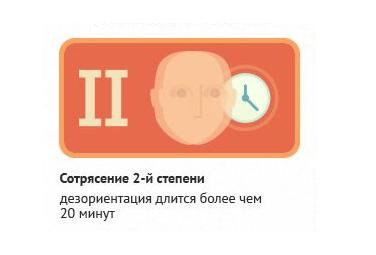
A moderate degree of damage is characterized by loss of consciousness for 10-15 minutes, vomiting, numbness in the fingers, ringing in the ears, and severe headache. You don't have to decide for yourself which medications to take for a concussion. Leave this to the discretion of the doctor - he has the knowledge and experience.
Stage 3
With significant injury, a person vomits, feels dizzy, and has loud noise in the ears. Fainting can last up to half an hour. Memory cannot recall recent events; This is practically shell shock.
Elimination of insomnia and dizziness
For insomnia, the victim is prescribed Phenobarbital, Elenium, Nozepam, Dormiplant and Adaptol, which perfectly eliminate not only insomnia, but also help with dizziness.
If after a concussion the victim suffers from a headache, he is prescribed strong painkillers - Pentalgin, Maksigan, Baralgin, Sedalgin, Analgin. Tanakan, Papaverine, Belloid, Microzer will help patients with dizziness,
If soft tissue damage is observed during a head injury, they are stitched and painkillers are prescribed from the list above.
Drug treatment for concussions is the gold standard in the treatment of such injuries. Doctors always try to help a patient without surgical methods, but in some cases such intervention has to be done. Rehabilitation of patients after surgery at home also involves the use of medications from the list above.
Why diuretics are taken for a concussion, what treatment is given - you will find answers to these and other questions in this article.
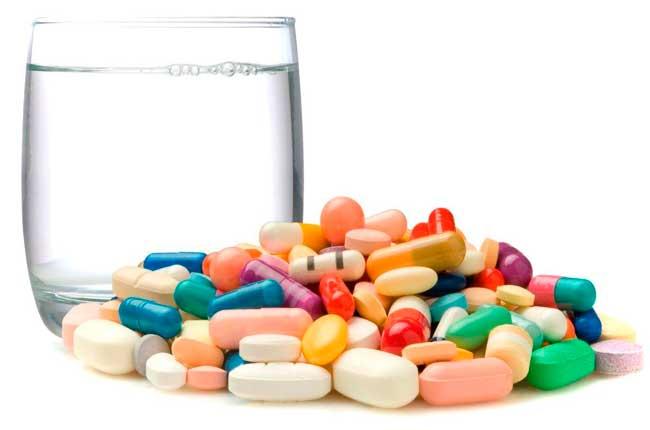
Why are diuretics taken for a concussion?
Concussion in children and adults: similarities and differences
In adults and children, the diagnosis and course of the disease, as well as the frequency of injury, differ.
Children
Kids cannot explain their feelings. Therefore, parents need to be attentive to the child and his behavior. If he is vomiting, refuses to eat, cries more than usual, there is a deterioration in coordination (for example, the baby has already eaten with a spoon himself, but at a certain moment he could not pick it up properly) - this is a reason to consult a doctor.
In addition, children are more prone to injury, because they are restless, active, but still have poor control of movements and calculation of strength. If a child suffers a head injury in the presence of his parents, there is no need to wait for symptoms to appear; immediately take the victim to the emergency room.
Adults
More often than not, adults behave carefully, but no one is immune from injury. At the first suspicion of a concussion, you should contact a neurologist or an emergency room. Enduring pain and taking pills to relieve symptoms during a concussion is very harmful.
Aged people
This category of people gets injured less often, but tolerates them worse. After a concussion, older people may develop dementia, Alzheimer's disease, and amnesia. Therefore, treatment for concussions in grandparents includes anti-sclerotic drugs. The dosage is calculated taking into account the age, weight and condition of the patient.
First aid to the victim
If a person suffers a head injury on the street, only a doctor can prescribe medication for a concussion. Therefore, it is necessary to provide first aid, but not to aggravate the situation. Here is a list of actions for a person without medical education.
- Place the patient on his side. Thus, a person will not choke on vomit, and his tongue in an unconscious state will not block the airway.
- If the head injury is open or other significant injuries are noticeable (fracture of a leg, spine, etc.), you should not move the victim of misfortune. Simply turn the victim's head to the side and monitor his breathing.
- Treat wounds on the head with an antiseptic and the edges with iodine (if you have a first aid kit with you).
- Call an ambulance and wait for it to arrive. Tell the doctors under what circumstances the injury occurred, how long ago, what medications the person is taking, whether he is intoxicated, how long he has been unconscious, and the like. Even unimportant details can play a leading role in the choice of prescribed drugs and which treatment to choose.
Drug treatment
For any person, a concussion is an injury for which you will have to receive medication in the form of injections or IVs. In mild stages, take medications orally, in tablet form.
Treating a concussion is a long process. It may take 2-4 weeks. During this entire time, it is necessary to take a responsible approach to each prescribed medicine, understand the name, read the instructions and take it correctly. The patient must be hospitalized and receive basic treatment in the hospital under the supervision of specialists. After a concussion at home, you need to stick to a routine, get more rest and not overexert yourself.
If a patient is diagnosed with a concussion, treatment must begin; the doctor selects medications for each specific case and calculates the dosage. But there are general instructions and recommendations on which pills to prescribe.
- First, we need nootropic drugs for concussions. They will restore health to the brain: Piracetam, Stugeron, Glycine, Nootropil.
- To strengthen blood vessels, vasotropic agents are prescribed: Instenon, Cavinton, Teonicol.
- To reduce swelling and reduce intracranial pressure, diuretics with a diuretic effect are used: Veroshpiron, Diacarb, Uregit.
- To reduce headaches and stop vomiting, Papaverine, Belloid, Tanakan are suitable.
- To normalize sleep and the general condition of the patient, tranquilizers are prescribed: Phenazepam, Dormiplant, Phenobarbital.
- Next are medications to prevent seizures and epilepsy. Such drugs are prescribed only if, according to research, a person has a predisposition to epileptic seizures. But for older people, these drugs are prescribed in any case.
- Antisclerotic agents for the elderly.
- Vitamins.
- Sleeping pills.
- Sedatives and sedatives are also required: valerian, Corvalol, motherwort.
Of course, it is not enough to undergo medical treatment for a concussion and forget about the injury.
During the treatment process and for a long time after, you need to take care and follow simple rules:
- Full sleep. The first month after injury – at least 8-10 hours a day.
- High-quality and varied food.
- Eliminate coffee, chocolate, alcohol, nicotine, drugs.
- Ventilate the living space.
- Avoid reading, watching TV, playing games on the computer or phone, and even listening to music.
- Engage in light exercise with your doctor's permission.
- Regularly take medications prescribed by your doctor for a concussion. Strict adherence to doses and time of administration guarantees a quick recovery and no complications.
Despite a long stay in the hospital and taking medications, every person needs to take care after discharge. Treatment should not be abruptly stopped after a concussion. A gentle regime, sufficient rest and sleep are recommendations for every former patient. Try to always be careful and careful. But if an injury occurs, follow the advice of doctors and follow their instructions. Belief in a speedy recovery and the patient’s responsibility is a necessary condition for effective treatment.
According to statistical studies, concussion is one of the leading diagnoses for head injury in both older people and children. Doctors believe that the most dangerous thing in this situation is not the injury itself, but the consequences that appear after a concussion. Taking medications for concussions in adults is necessary to prevent deterioration in health after the injury. And in general, you need to take the treatment procedure responsibly.
When the first signs of brain injury appear, you should immediately call an emergency team. To help a person before the ambulance arrives, you must do the following:
- Place the injured person on a horizontal surface with a rigid base.
- Turn your face as close to the ground as possible to avoid tongue retraction or vomit or other bodily fluids entering the respiratory system.
- If fractures of the spine and legs can be confidently ruled out, it is best to place the victim on his side with his right leg bent 90 degrees and his arm under his head.
- If open injuries are found on the scalp, they must be treated with an antiseptic, and the edges additionally lubricated with iodine.
Be sure to remember that you can help a victim with a suspected concussion, without being a medical professional, only in order to alleviate his well-being. If you have a concussion, you should not take any medications until doctors arrive. Only after a thorough diagnosis at a medical institution can a neurologist determine and prescribe treatment.
Contraindications
There are also contraindications for use in the form of individual intolerance to the drug, increased intracranial pressure, severe forms of coronary heart disease and arrhythmias, in the initial period after cerebral hemorrhagic stroke, as well as during pregnancy.
During treatment with Vinpocetine, stop breastfeeding.
Vinpocetine is contraindicated in the presence of:
- pregnancy;
- hypersensitivity to drug components;
- severe forms of arrhythmia;
- severe coronary heart disease;
- acute phase of hemorrhagic stroke.
Also, the medicine is not prescribed to nursing women and persons under 18.
Restrictions on use:
- liver failure;
- use of antihypertensive drugs or drugs that increase the QT interval;
- poor tolerance to Vinca alkaloids.
During pregnancy
Indications for treatment
Before prescribing a course of treatment for an injury such as a concussion, it is important to analyze the causes of its occurrence. This may happen due to:
- domestic injury;
- accident.
Particularly serious consequences of such damage can occur in elderly people in the form of:
Because the brain is made entirely of soft tissue, a sudden change in head position or the impact of a blow can change its structure. There is a risk of hematoma formation due to rupture of blood vessels, which leads to interruptions in blood supply to parts of the brain.
In this condition, an adult may experience symptoms such as:
- headaches;
- visual impairment;
- dizziness;
- nausea;
- lack of coordination.
If, after an accident or domestic injury, a person experiences such symptoms, it is necessary to urgently consult a neurologist or traumatologist. To establish the correct diagnosis, the doctor will definitely prescribe the following studies:
- Computed tomography (CT);
- Ultrasound examination (ultrasound);
- Radiography;
- Magnetic resonance imaging (MRI);
- Electroencephalogram (ECG).
What is a concussion?
The causes of this injury can be either a domestic accident or an accident. A concussion can occur as a result of carelessness, after a fight, after a sports competition, and it occurs at any age. But it is especially dangerous in the elderly, since it is almost impossible to predict the consequences. In older people, a concussion leads to dementia, Alzheimer's disease, problems with blood pressure, and amnesia. In children, as a rule, amnesia does not occur, but the injury itself is much easier to obtain. Even as a result of a shock, after a long trip, or landing on your feet from a great height, you can get a concussion, albeit in a mild form.
So when do they talk about such a disease? Does damage to brain tissue occur from contact with something or not? Since our brain consists of soft membranes and tissues, and is also completely filled with cerebrospinal fluid, a sudden movement, shake, or blow literally causes “fluttering.” In addition to changes in the structure of the brain, there is a risk of hematoma, rupture of blood vessels and interruption of normal blood supply. That’s why, in order to prescribe what medications to take, the doctor conducts a comprehensive diagnosis and identifies every single consequence of a concussion.
Cartoon characters often see “stars in their eyes” when they hit their head. And this is a direct one that occurs when vision is impaired.
Therefore, first of all, at the slightest suspicion of injury (headache, dizziness, problems with coordination, vision, hearing, nausea, etc.), you need to contact a neurologist or traumatologist at the department. We have already written in detail about the symptoms and the first one. If the person next to you has suffered a traumatic brain injury and has lost consciousness or is in a stunned state, you should not give him pills yourself. Call an ambulance, wait for the doctor to arrive and try to describe the incident in detail.
Drug treatment of concussion
The main thing in the treatment of concussion is the absence of aggressive medications, since the goal of all therapeutic measures is to stabilize brain function, relieve pain, dizziness, sleep disturbances, anxiety and other possible unhealthy conditions. The most commonly prescribed drugs are analgesics
,
sleeping pills
and
sedatives
in the form of tablets, sometimes intramuscular injections.
Medicines for pain relief should be selected on an individual basis. However, you can relieve pain:
- Analgin;
- Sedalgin;
- Pentalgin;
- Baralgin;
- Maxigan.
The same goes for dizziness.
, to remove them you need to choose one of the following drugs:
- tanakan;
- betaserk;
- bellaspon;
- microzer;
- belloid;
- platiphylline;
- papaverine.
For a calming effect you can drink:
If anxiety develops into constant anxiety, tranquilizers
. You can relieve anxiety using:
- Phenazepam;
- Sibazon;
- Nozepam;
- Rudotel;
- Elenium.
Medicines
Drug treatment in this case is intended to normalize the functional state of the brain, relieve dizziness, headache, insomnia, and anxiety.
As a rule, the following drugs are prescribed for a concussion: analgesics, sleeping pills and sedatives.
Among the painkillers (pentalgin, analgin, maxigan, sedalgin, baralgin and others), the most effective drugs for the given victim are selected. Cerucal is prescribed as an antiemetic.
Infusions of valerian or motherwort are used as sedatives, as well as drugs that contain phenobarbital (valocordin or corvalol) and tranquilizers (phenazepam, rudotel, sibazon, elenium, nozepam, etc.).
In order for this to happen more fully and quickly and to prevent post-concussion syndromes, a course of metabolic and vascular therapy is recommended.
Cerebrotropic and vasotropic therapy is prescribed a week after the injury. It is best to combine nootropic (picamilon, aminalon, nootropil, etc.) drugs with vasotropic (teonicol, stugeron, cavinton, etc.). For a month you need to take 1 tablet three times a day. Cavinton and 1 caps. nootropil.
To overcome asthenic phenomena after a concussion, multivitamin tablets are prescribed, for example, “Vitrum”, etc.
Eleutherococcus extract, ginseng root and lemongrass are used as tonic preparations.
Additional measures for recovery after injury
A speedy recovery after a concussion can be facilitated by taking multivitamins and tonics
, such as
eleutherococcus
or
ginseng root
.
Reladorm is prescribed
or
Phenobarbital
, although for most injured people taking regular
Diphenhydramine
.
In parallel with relieving the symptoms of brain injury, it is very good to take additional measures to treat the vascular and metabolic systems of the body. This will help speed up the recovery of brain activity and prevent the possible development of post-concussion disorders.
The best options are complexes of neurometabolic stimulants (aminalon, picamilon, encephabol, nootropil) and vasotropes (stugeron, cavinton, sermion, theonicol). Sometimes gliatilin is prescribed, which is also a fairly effective drug. In different treatment options, the following may be prescribed: Cavinton 1 tablet 5 mg 3 times a day and nootropil 2 capsules 0.7 mg per day or Stugeron 1 tablet 25 mg and Encephabol 1 tablet 0.1 mg in the period from 30 to 60 days.
To eliminate the asthenic condition as a consequence of a concussion, a complex of cogitum 20 mg per day, pantogam 0.5 mg three times a day, vazobral 2 ml twice a day and a choice of one of the multivitamin preparations of the type “ Unicap-T", "1 time per day.
To increase the overall tone of the body, ginseng extract, tincture of Eleutherococcus, Schisandra fruits, pantocrine, saparal are often used.
When an elderly person receives such an injury, it is imperative to supplement treatment with anti-sclerosis drugs. It is also important to pay due attention to the prevention of other diseases that may occur as a result of a concussion.
Sometimes anticonvulsant treatment may be necessary if the patient is experiencing epileptic seizures. But if there are no such attacks, and the EEG diagnosis does not confirm a pre-convulsive state, there is no need for preventive measures.
To prevent the development of possible side effects of such an injury after a course of treatment, you must periodically visit a doctor for observation for 1 year.
"Furosemide"
Quite often, a moderate to severe concussion leads to an increase in intracranial pressure, which can trigger the development of dangerous brain diseases. To remove excess fluid and reduce the pressure of the cerebrospinal fluid on the meninges, diuretics are used, which include Furosemide.
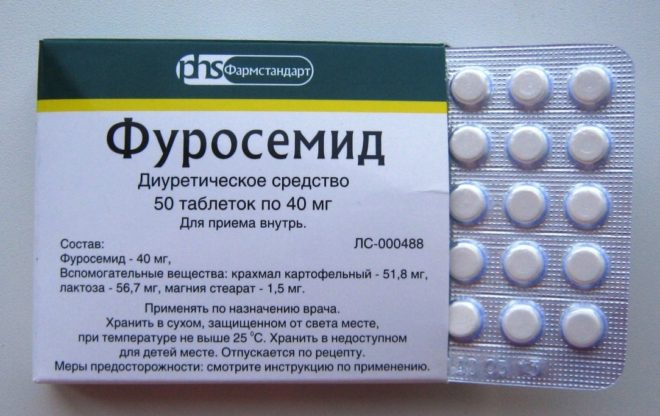
The active substance of the same name belongs to fast-acting loop diuretics; it suppresses the absorption of sodium and chloride ions. Usually prescribed along with calcium supplements to prevent swelling of the gray matter of the brain. The dosage of the medicine is selected by the doctor depending on the clinical picture, but it cannot exceed 1500 mg per day. The tablet form is not prescribed for children weighing less than 10 kg; parenteral administration is possible according to the indications of a specialist.
Contraindications include: renal failure, hepatic encephalopathy, hypovolemia, hypersensitivity to sulfonamides, precomatous and comatose state.
Rehabilitation after a concussion
Taking the pills is usually started at home after discharge from the hospital. To improve their impact and eliminate possible complications in the post-traumatic period, the patient is shown the following daily regimen:
If the victim ignores treatment and post-traumatic treatment, he risks increasing the recovery period of brain function and the possibility of the appearance of side effects of injury such as asthenia, emotional, behavioral, cognitive disorders, and vegetative-vascular dystonia. People who drink alcohol can develop epilepsy.
A concussion is a temporary functional disorder of brain activity resulting from an injury. When considering traumatic brain injury, doctors confidently point to concussion as its most common type. The reasons are various factors: sports accidents, criminal domestic incidents, road traffic accidents and many others.
In our article we will talk about how the clinical picture manifests itself after an injury, we will analyze some of the features, and also find out what pills there are for concussions.
Symptoms
Loss of consciousness is the defining symptom that occurs as a result of a head injury during a concussion. Although in older people and in childhood there may be exceptions. Along with this, the following manifestations may occur:
- nausea and vomiting (usually one-time);
- pulse arrhythmia, deviation in tempo in any direction;
- increased breathing;
- functional memory impairment.
This picture will soon normalize, physiological processes will return to normal, and memory will be completely restored. However, the next stage begins, which may be characterized by:
- weakness;
- dizziness and pain;
- nausea;
- tinnitus;
- increased sweating;
- sleep disturbance;
- uncomfortable sensations.
As a rule, the general condition of patients normalizes during the first, and less often, the second week. But some symptoms may persist for a longer time. This may depend on various factors, including the individual characteristics of the victim’s body.
Children and elderly people. Features of manifestation
The age factor is decisive in the formation of the clinical picture of a concussion.
Infants and young children usually do not show changes in consciousness when injured. At the beginning, you can observe paleness of the skin, especially the face, impaired breathing and heartbeat, and then general weakness sets in and the baby is drawn to sleep. Over the course of 2–3 days, a concussion may be accompanied by sleep disturbances, regurgitation during feeding, and other changes in behavior. Then it goes away.
Elderly people who suffer a head injury that leads to a concussion rarely lose consciousness. Instead, they may experience disorientation in time and space. The main symptom is a throbbing headache localized in the back of the head. The clinical picture normalizes 2–7 days after injury. It is much more difficult for people suffering from arterial hypertension to endure such injuries.
Drug therapy: list of drugs

Different medications are prescribed for a concussion, based on the complexity of the injury, the age of the patient and the characteristics of the clinical picture of the pathological condition.
Painkillers
Most often recommended:
- Baralgin;
- Analgin;
- Sedalgin;
- Maxigan;
- Diclofenac;
- Ketorolac;
- Citramon;
- Pentalgin.
Prescribed if a person complains of persistent headache after injury. Most often, this symptom is the main sign of a concussion.
If the intensity of discomfort is high, the doctor prescribes combination drugs with an antispasmodic or sedative effect.
The main action is aimed at blocking pain receptors and opening blood vessels, thereby eliminating unpleasant sensations.
They cannot be taken for a long time because they have a toxic effect on the liver.
General distinctive features of the drugs:
- relief of pain within a minimum period of time after administration;
- elimination of smooth muscle spasms;
- slight decrease in body temperature;
- are contraindicated for people with individual intolerance to individual components of these medications, as well as for those diagnosed with suppressed bone marrow bleeding, angina pectoris, intestinal obstruction, angle-closure glaucoma, and disorders of the kidneys or liver.
You should not take painkillers immediately after receiving an injury. This syndrome is important for making a correct diagnosis.
Worth knowing! When looking for analogues at a more reasonable price, you run the risk of finding a similar composition, but it will do more harm to the body than good. The attending physician's prescriptions are always individual for each patient.
Nootropics

Most often recommended:
This group of drugs is aimed at restoring metabolic processes in the brain, namely, normalizing nutrition and blood supply to organ cells. Besides? nootropics eliminate the adverse effects of unstable blood circulation in the area of nerve cells, due to the formation of hematoma.
Diagnostics
Treatment of a concussion at home or in a hospital requires preliminary diagnosis. It is extremely important to reconstruct the circumstances of what happened. Concomitant factors such as the psychological state of the victim, alcohol intoxication, and others play a significant role.
Objective diagnostic signs indicating a concussion of the victim’s brain are often simply absent. Loss of consciousness for a short period of time (no more than a few minutes), loss of coordination of movement, twitching of the eyes when looking to the side - all this can be recorded by doctors or eyewitnesses, but only in the first minutes of the incident.
It is curious that there are no instrumental or laboratory signs indicating a concussion. This is explained by the following reasons:
- no damage to the bone tissue of the skull;
- no changes in intracranial pressure;
- CT (computed tomography) does not reveal traumatic abnormalities of intracranial structures;
- M-echoscopy (ultrasound examination) does not identify any pathologies resulting from injury;
- MRI (magnetic resonance imaging) does not indicate lesions of a traumatic nature.
A concussion can often hide more complex brain injuries, so the situation requires observation and examination. For this reason, such patients are often hospitalized in a hospital, where they receive neurotraumatological care.
So, the defining symptoms indicating a concussion of the victim’s brain are:
- loss of consciousness, which can be reported by the victim himself or by eyewitnesses;
- complaints of headache, nausea and even vomiting;
- absence of manifestation of more severe symptoms, for example, loss of consciousness for half an hour or more, paralysis of limbs, etc.
Nootropic drugs
Treatment for a concussion is primarily medication. If those around you do not know what to do in case of a concussion and how first aid should be provided, then the victim must immediately call an ambulance. When a patient enters a medical facility, he will undergo all the necessary diagnostic procedures (the first CT scan, MRI, after which studies will be carried out several more times) and the degree of brain damage, if any, will be determined. For mild concussions, the patient may be sent home for observation and continued monitoring at home.
Head injuries are treated using neuroprotectors. This is the first and main group of medications. The main task of neuroprotectors is to normalize metabolism in brain tissue, which helps to improve the nutrition of its cells. Neuroprotectors also eliminate pathological changes in neurons and protect them from insufficiency of cerebral blood supply (for example, when a hematoma occurs in a certain area of the head after a concussion). The group of neuroprotectors includes nootropic drugs, such as Semax, Ceraxon, Piracetam, Cerebrolysin, Picamilon, Nootropil, Encephabol, Glycine, Lucetam, Alvezin, Methionine.
First aid
When a victim receives an injury that suggests a concussion, the first step is to seek help at an emergency room or call an ambulance. If the individual is unconscious, he must be carefully laid on his right side, his head thrown back, and his face turned towards the ground so that saliva, possible vomit and blood do not block the airways, and the tongue does not sink. In order to avoid spinal fractures, the left leg and arm should be bent at an angle of 900 at the knee and elbow joint, respectively.
After this, a traumatologist or neurologist will examine him and send him for an X-ray of the skull. The optimal diagnostic method in this case is the use of CT and MRI, but the hospital does not always have the opportunity for such examinations. In this case, M-echoscopy is used.
To avoid complications, if the diagnosis is confirmed, the patient should be sent to a hospital, where he will be under the supervision of doctors for some time and undergo further examination.
Treatment of concussion
Drugs and all procedures related to the treatment of victims of concussion are of a medicinal nature. All medications must contain neuroprotectors. Nootropil and pirocetam are the most common medications. The maximum single dosage for an adult patient is 1200 mg, 2-3 times a day.
Doctors also often prescribe other drugs and pills for concussions:
- dehydrants (for example, Diacarb);
- drugs that restore vascular function, in particular Cavinton);
- antioxidants (for example, Mildronate and Actovegin intravenously);
- Somazina or Cerebrolesin intravenously as a saline solution;
- various vitamin complexes, including vitamin B, phosphorus and folic acid;
- sedatives – in case of insomnia, headaches and other disorders (Adaptol, Dormiplant).
Dehydrants
The next group of drugs for concussion is dehydrants. These drugs help remove excess water, after which the swelling of the brain during a concussion will also subside. Along with this group, diuretics are widely used, which also remove fluid from the victim’s body. The most popular dehydrant is Diacarb, and diuretics are represented by drugs such as Arifon, Aldactone, Lasix, Veroshpiron, Furosemide in tablet form, but you can also give injections, Hypothiazide, Indap, Indapamide.
Forecast
In order to restore full working capacity, without any consequences, it is necessary to follow the appropriate treatment algorithm and adhere to the recommendations prescribed by the doctor and specified in this article.
In some cases, patients, after the acute stage of a concussion, may suffer from functional memory impairment, difficulty concentrating, experience unreasonable anxiety and irritation, suffer from headaches, dizziness, etc.
As a rule, over the course of 3–12 months these signs smooth out to a large extent or disappear completely. The determining factors in this may be chronic diseases that aggravate the clinical picture, the repetition of such injuries, etc.
1–2 weeks is a period of temporary incapacity for work, which, as a rule, is established by a medical labor examination.
Treatment of a concussion at home is possible, but subject to a mandatory preliminary examination. The specialist prescribes a regimen, gives the necessary recommendations and can prescribe pills for concussions, some of which we indicated above as an example.
Remember that the head is an important part of us, without the quality functioning of which normal human activity will become impossible. Therefore, at the very first signs specified in our article, appropriate measures must be taken urgently in relation to the victim.
The main treatment for a concussion is bed rest, which the victim must observe for 3-5 days. It is also advisable to limit reading, listening to music and watching TV. Drug therapy for SHM is not mandatory, however, to quickly restore working capacity, victims are recommended to take diacarb with asparkam, Mexidol, vascular, mild painkillers and sedatives.
When treating a concussion, the general condition of victims usually quickly normalizes during the first, or less often, the second week after the injury.
First aid
First aid rules
In case of a concussion, the main complaints of the victim are headache of varying severity and localization, as well as loss of consciousness. It is based on the assessment of these indicators that the doctor determines the degree of concussion (from mild to severe). It should be understood that in some situations the patient himself hides the true picture of the incident, trying to deceive the doctor. If necessary, to assess the patient’s condition and establish an accurate diagnosis, all available additional examination methods are used (radiography of the skull, echosonography of the brain, electroencephalography, magnetic resonance imaging).
Immediately after an injury, the victim must be provided with complete rest - the person must be laid down, any fasteners and buckles on clothing must be unbuttoned, and the upper airway must be checked (turn the head to the side, stretch out the tongue if necessary). Before being examined by a doctor, it is not advisable to give medications, as well as any foods or liquids. Any attempt to drink or eat something can cause vomiting.
If the victim complains of dizziness and tinnitus, it is necessary to lay him down, and if there is a suspicion that a neck injury has developed simultaneously with the head injury, it is necessary to fix the patient’s neck using available means. To create an improvised splint, clothing that can be rolled into a roll is suitable - it is placed under the head and neck.
After an injury, it is advisable for the victim to call an ambulance. Transportation, which will be performed by specialists, will be less dangerous than attempting to independently deliver the patient to a medical facility. However, if it is impossible to call an ambulance, you can carefully transport the victim, but only in a lying position and in the back seat of the car.
If after an injury the patient has lost consciousness (this is one of the signs of a concussion), you can give him a sniff of ammonia, but it is strictly forbidden to shake the victim or slap him on the cheeks.
If after an injury the patient is conscious, but complains of a growing headache, nausea and vomiting, and a gradual and progressive deterioration in health, then there is a high probability that the person will develop intracranial hemorrhage. In this case, the usual rules for providing first aid for a concussion will not help the patient; such a person should be taken as soon as possible to a medical institution, where a comprehensive examination can be carried out to determine the true severity of the injury. If there is bleeding from the vessels of the meninges or hemorrhage into the substance of the brain, only neurosurgery can save the patient - conservative treatment cannot stop the bleeding.
If there is any doubt that the patient may have suffered a concussion, additional qualifications of a qualified neurologist or neurosurgeon are required. It is in the interests of the patient himself to provide as complete and truthful information as possible about the nature of the injury, since only based on anamnesis data can one assume the degree of brain damage and, in combination with research data, develop a rehabilitation program.
Source lechimsya-prosto.ru
Medicines
After hospitalization and an initial examination, the doctor will prescribe a number of examinations to the patient to confirm the diagnosis:
CT and magnetic resonance imaging. Electroencephalogram. Examination by an ophthalmologist. Ultrasound examination. X-ray of the skull and cervical spine, etc.
First and foremost, medications used to treat concussions should include neuroprotectives. The most popular dosage forms are nootropil and piracetam. The dosage for an adult is a maximum of 1200 mg once, the drugs are taken 2-3 times a day. Doctors also often prescribe:
Cerebrolysin or Somazina - administration in the form of saline solution intravenously.
Antioxidants - for example, intravenously administered drugs Actovegin, Mildronate.
Dehydrants in tablet form, such as Diacarb.
Cavinton and other vascular stabilizing drugs.
Vitamin complexes, with the obligatory inclusion of B vitamins, folic acid, phosphorus.
For severe pain, disorders, insomnia, use sedatives. The most adequate of them are Adaptol, Dormiplant and their analogues.
Source medinsult.ru
Pills
Drugs used in treatment (as prescribed by a doctor and under his supervision!)
1. Improving cerebral circulation:
Cinnarizine tablets 0.025 g Stugeron Cinnarizine
2. Nootropics:
Piracetam injection solution 20% Lucetam Piracetam film-coated tablets 0.2 g Piracetam 0.4 g capsules Glycine Nootropil
3. Diuretics:
Indapamide Indap Arifon Furosemide injection solution 1% Furosemide tablets 0.04 g Lasix Veroshpiron Hypothiazide Furosemide Aldactone
Price
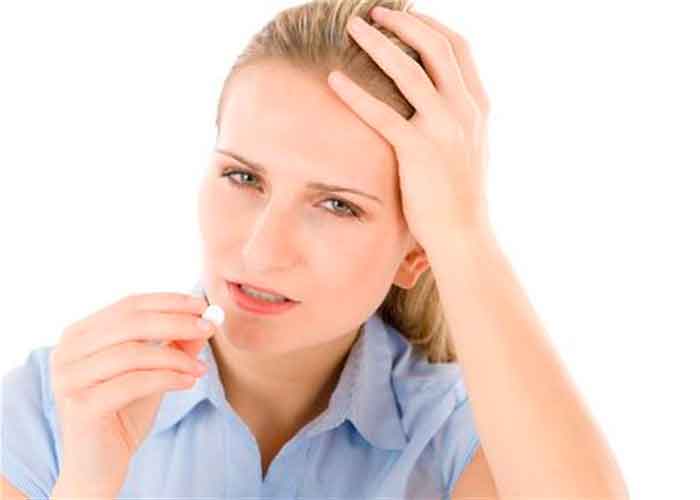
The average cost of Vinpocetine in the form of 5 mg tablets No. 50 is from 35 to 53 rubles. The average cost of a medicine in the form of a concentrate 0.5% No. 10 is from 45 to 65 rubles. The price depends on the manufacturer, dosage and volume of the drug.
For residents of Russia, Vinpocetine in tablets costs 130-210 rubles. per package. The cost of ampoules No. 10, 2 ml each, is close to 65 rubles.
Patients from Ukraine can purchase Vinpocetine tablets for approximately 30 hryvnia. The average cost of the injection form of the drug is about 28 UAH.
Analogs
Analogues of Vinpocentine include the following drugs: Cavinton, Oxopotin, Vicebrol, Piracetam, Neurovin.
